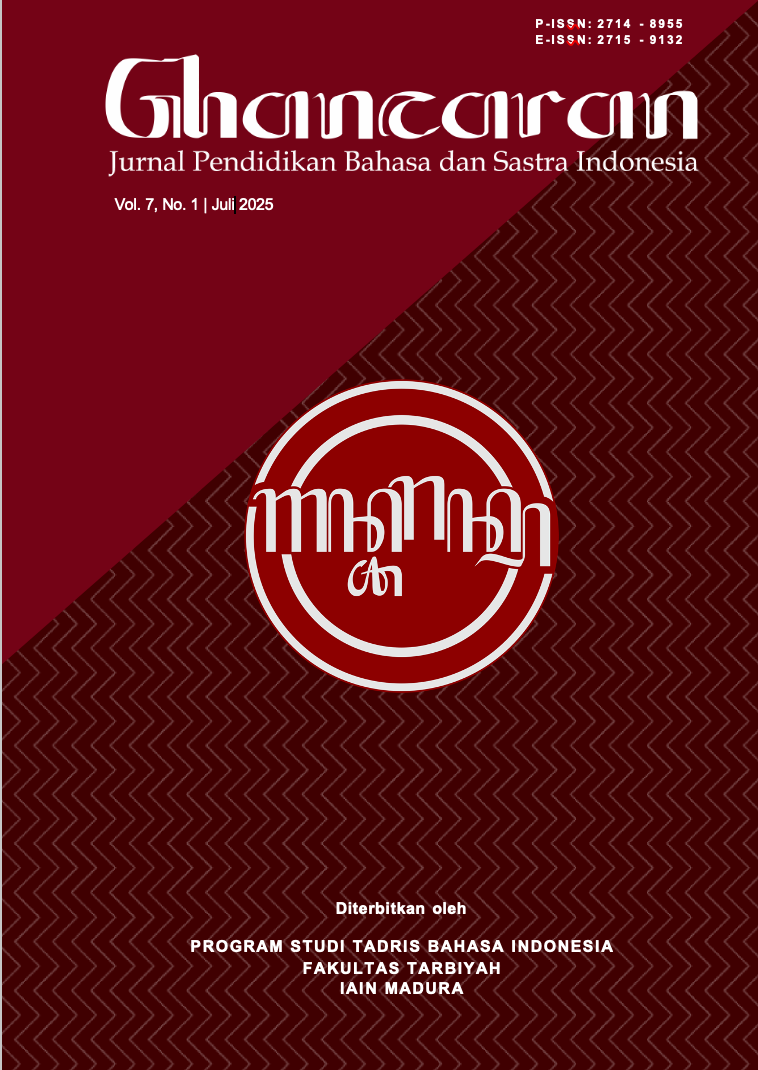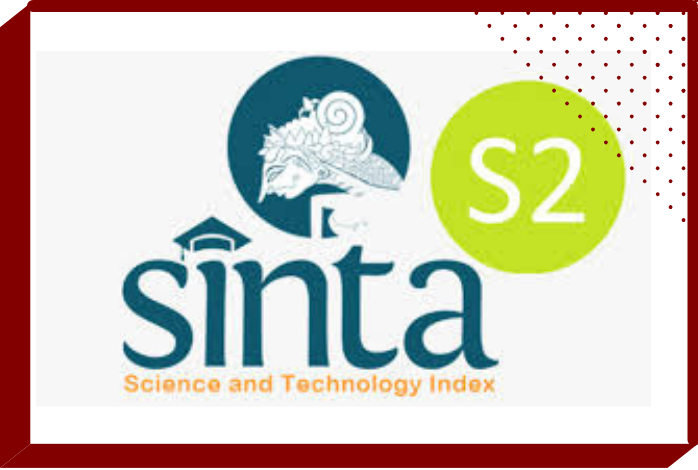Menu Naming as a Branding Strategy of Indonesian Restaurants in Kuala Lumpur: a Socio-onomastic Approach
 Abstract views: 216
,
Abstract views: 216
,
 PDF downloads: 291
PDF downloads: 291
Abstract
This research aims to identify strategic language components in Indonesian menu items and restaurants as part of a broader branding strategy for Indonesian establishments in Kuala Lumpur. Employing a qualitative approach based on Miles and Huberman’s interactive model alongside descriptive methods, the study ensures a thorough and systematic analysis. The primary data comprise menu listings from two selected restaurants, categorized into: (1) Indonesian restaurants offering a diverse range of dishes and (2) Indonesian franchise restaurants featuring a single branded menu. Data were also enriched through direct observation of both establishments. Findings from D'Chowkit Restaurant (R1) reveal that many menu items adopt unique and attention-grabbing names that reference cultural symbols and social conditions, thus associating the food with meanings beyond its culinary function. In contrast, Ayam Gepuk Pak Gembus (R2) exhibits minimal linguistic variation, relying instead on an already well-established brand image known for its reputation, quality, and prestige in both Indonesia and Malaysia. The brand’s recognition alone strongly influences consumer perception. These findings demonstrate that linguistic choices in menu presentation, together with established brand narratives, not only attract consumer interest but also communicate cultural authenticity, create symbolic value, and reinforce Indonesia’s culinary identity within an increasingly competitive transnational context.
Downloads
References
Anwar, M.S. (2019). Misi Cerita Pendek Malaysia: Interaksi Simbolik untuk Membangun Citra Etnis Cina. Atavisme, 22(2), 185-199.
Anggraeni, Unsiyah. 2018. Multikulturalisme Makanan Indonesia. Kementerian Pendidikan dan Kebudayaan Badan Pengembangan dan Pembinaan Bahasa: Jakarta.
Bunmak, S. (2013). Tom Yam Restaurants: An Ethnic Interplay in a Malaysian Context. Research Unit for Cross-Border Studies, Faculty of Humanities and Social Sciences, Thaksin University, Songkhla 90000, Thailand. Kasetsart J. (Soc. Sci) 34: 525–533.
Chaney, David. (2011). Lifestyles–Sebuah Pengantar Komprehensif. Yogyakarta: Jalasutra.
Denzin, N. K., & Lincoln, Y. S. (1994). Handbook of Qualitative Research. Thousand Oaks, CA: Sage Publications.
Fischler, Claude. (1988). Food, Self, and Identity. Social Science Information, 27: 275-293.
Gerhardt, Cornelia, (2013). Culinary Linguistics: The Chef’s Special. Amsterdam: John Benjamins Publishing Company.
Griffin, Jill. (2003). Customer Loyalty: Menumbuhkan & Mempertahankan Kesetiaan Pelanggan. Dialihbahasakan oleh: Dwi Kartini Yahya. Jakarta: Erlangga.
Högström, C., Gustafsson, A., & Tronvoll, B. (2015). Strategic Brand Management: Archetypes for Managing Brands Through Paradoxes. Journal of Business Research, 68(2), 391–404.
snaniah, S., Agustina, T., Rochman, M. A., & Kusmanto, H. (2024). The
naming of halal food and beverages: A multimodal semiology study. Studies in English Language and
Education, 11(1), 454-473.
snaniah, S., Agustina, T., Rochman, M. A., & Kusmanto, H. (2024). The
naming of halal food and beverages: A multimodal semiology study. Studies in English Language and
Education, 11(1), 454-473.
Isnaniah, S., Agustina, T., Rochman, M. A., & Kusmanto, H. (2024). The Naming Of Halal Food And Beverages: A Multimodal Semiology Study. Studies in English Language and Education, 11(1), 454-473.
Jaafar, Nofariza. (2023). Niat Cari Rezeki, Tidak Endah Gelaran 'Nasi Lemak Janda'. Sinar Harian. Diakes tanggal 21 Mei 2025.
Kapferer, J. N. (2008). The New Strategic Brand Management: Creating and Sustaining Brand Equity Long Term (4th Ed.). Kogan Page Publisher.
Kartajaya, Hermawan. (2004). Positioning Differentiation Brand. Jakarta. PT Gramedia Pustaka Utama.
Kapferer, J. N. (2008). The New Strategic Brand Management: Creating and Sustaining Brand Equity Long Term. Kogan Page Publishers.
Kennedy, John E., & R. Dermawan Soemanagara. (2009). Marketing Communication, Taktik & Strategy. Jakarta: PT Buana Ilmu Populer, Kelompok Gramedia.
Keraf, Gorys. (1981). Diksi dan Gaya Bahasa. Jakarta: Nusa Indah.
Lavenia, A. (2022). Food gender, benarkah sebuah stereotip? CXO Media. Diakses pada 19 Mei 2025.
Mulyana, Deddy, (2008). Metode Penelitian Kualitatif. Jakarta: Remaja Rosdakarya.
Miles, M. B., & Huberman, A. M. (1994). Qualitative Data Analysis: An Expanded Sourcebook. Thousand Oaks, CA: Sage Publications.
Moeliono, Anton M. (1984). Santun Bahasa. Jakarta: Gramedia Pustaka Utama.
Nuari, Pramita Fara. (2020). Penamaan Menu Makanan di Bali. BELAJAR BAHASA: Jurnal Ilmiah Program Studi Pendidikan Bahasa dan Sastra Indonesia, 5(1), 73-90.
Pramesti, Lady Belia. (2021). Tingkat Kepuasan Konsumen terhadap Kualitas Daging Ayam di Outlet Ayam Gepuk Pak Gembus Cabang Jakarta Barat. Skripsi Tidak Diterbitkan. Jakarta: Universitas Islam Negeri Syarif Hidayatullah.
Prihastuti, A. H. (2018). Pengaruh Alokasi Belanja Modal dan Pertumbuhan Ekonomi. Menara Ekonomi. Menara Ilmu, 12(4), 1-8.
Rahman, M., Rodríguez-Serrano, M. Á., & Lambkin, M. (2018). Brand Management Efficiency and Firm Value: An Integrated Resource Based and Signalling Theory Perspective. Industrial Marketing Management, 72, 112-126.
Sazili M. (2023). Kisah Sukses Rido Nurul Pemilik Ayam Gepuk Pak Gembus: Berawal dari Kaki Lima, Siap Tembus Amerika. Inews Tangsel. Diakses pada 20 Mei 2025.
Swee-Hock, Saw and Kesavapany, K. (2005). Malaysia: Recent Trends and Challenges, Singapore: ISEAS Publishing.
Sugiyono. (2008). Metode Penelitian Kuantitatif Kualitatif dan R&D. Bandung: Alfabeta
Sadat, M Andi. (2009). Brand Belief: Strategi Membangun Merek Berbasis Keyaninan. Jakarta: Salemba Empat.
Safari, S., Razali, N.A., Wan Ibrahim, W.M. and Abdul Rahim, M.S. (2022). Consumer Perception and Satisfaction for Durian Taste Among The Chinese Consumer: Malaysia Vs Thailand Durian. Food Research, 6(1), 67-74.
Subagiyo, R., & Syaichoni, A. (2024). The Potential of Halal Culinary Tourism Among Non-Muslim Communities in Bali. Jurnal Ekonomi dan Perbankan Syariah, 15(2), 185.
Susanto, Rizki. (2012). Analisis Pengaruh Citra Merek dan Bauran Promosi Terhadap Keputusan Konsumen Menggunakan Jasa Lembaga pendidikan Bahasa Inggris. Skripsi Tidak Diterbitkan. Semarang: Universitas Diponegoro Semarang.
Ullmann, S. (2014). Pengantar Semantik. Yogyakarta: Pustaka Pelajar.
Ullmann, S. (1962). Semantics: An Introduction to the Science of Meaning. Oxford: Basil Blackwell.
Veloutsou, C. (2005). Measuring Transaction-Specific Satisfaction in Services: Are The Measures Transferable Across Cultures?. European Journal of Marketing. 39(5/6), 606-628.
Zarate, M. A., & Smith, E. R. (1990). Person Categorization and Stereotyping. Social Cognition, 8(2), 161–185.
Copyright (c) 2025 GHANCARAN: Jurnal Pendidikan Bahasa dan Sastra Indonesia

This work is licensed under a Creative Commons Attribution-ShareAlike 4.0 International License.
Ghancaran: Jurnal Pendidikan Bahasa dan Sastra Indonesia uses an Open Access Policy under the Creative Commons Attribution-ShareAlike 4.0 International License. Authors publishing in this journal agree to the following terms:
- Ghancaran Journal holds the copyright and grants the journal rights for first publication with the work simultaneously licensed under a

The work is distributed under Creative Commons Attribution-ShareAlike 4.0 International License which allows others to share, copy, and redistribute the material in any media or format and adapt, remix, change, and develop the material even for commercial purposes, as long as it is stated credit and license derivative works under similar terms. - Authors may make additional contractual arrangements for non-exclusive distribution of the journal's published work version.
- Authors are permitted to post their work online (e.g., in institutional repositories or on their websites) before and during submission, as doing so may lead to productive exchange.



















